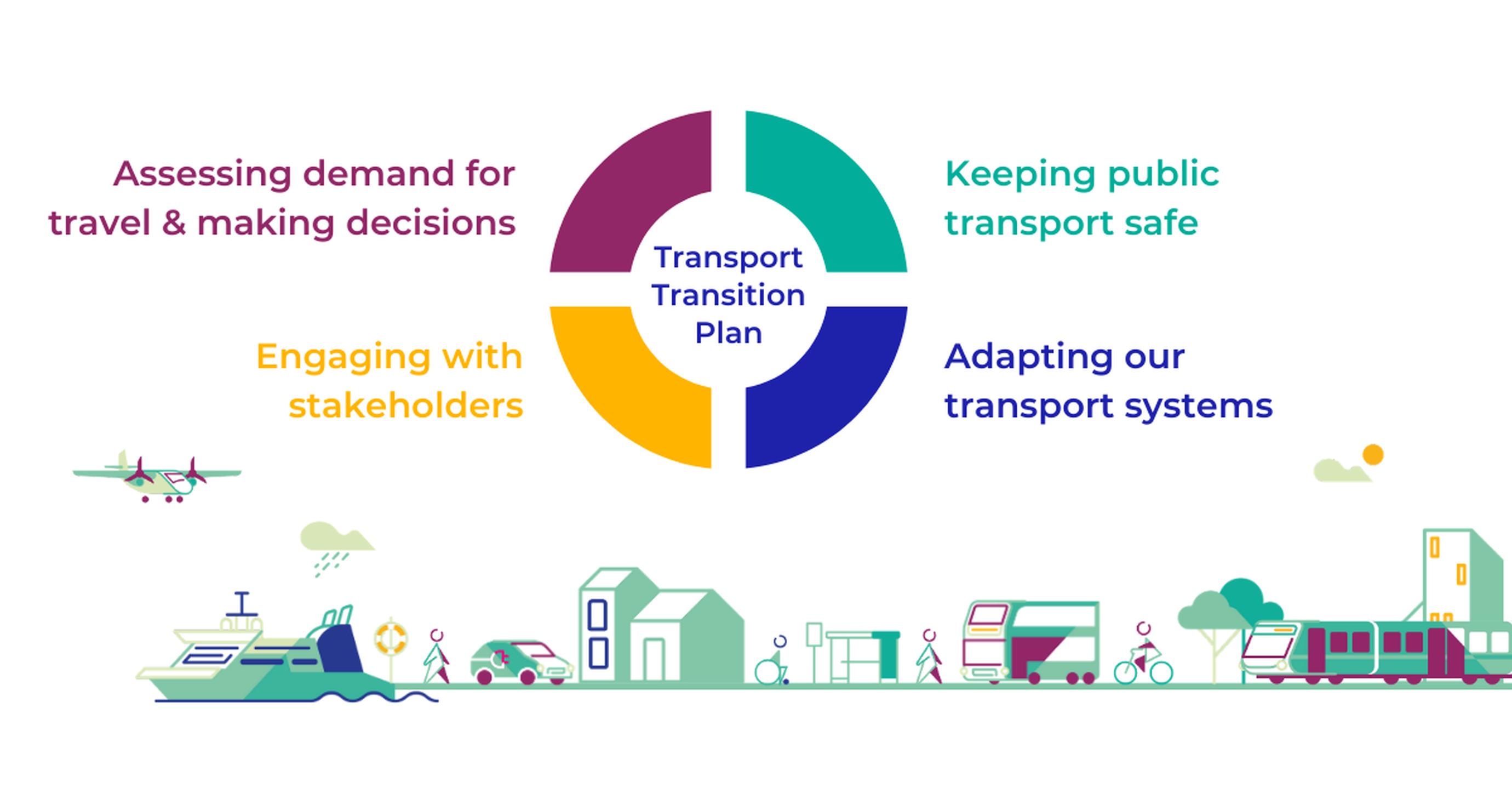

The Scottish Government has published guidance for transport operators and passengers as well as committing further funding to support a phased transition out of lockdown.
The new travel guidance is published as part of the Scottish Government’s Transport Transition Plan.
It follows the publication of a detailed route map by the Scottish Government regarding next steps last week: COVID-19: Scotland’s route map for transitioning through and out of the crisis.
The guidance advises passengers about when and how to safely access public transport through good hand hygiene, respecting physical distancing, using face coverings and avoiding busier times.
The plan says that continuing to work from home should be the default position where possible, flexible start and finish times and making more active travel choices will be vital in easing the number of people accessing public transport.
The Transport Transition Plan states that the Scottish Government acknowledges that opinion polling shows that public confidence in public transport has reduced significantly. It wants to promote the use of sustainable transport choices where possible and not become a society with greater car dependence than before.
The plan states it is important to ensure communication is clear so that transport users understand the circumstance in which they should be travelling. There will be geographic challenges and there will be no ‘one size fits all’ to the approach. Public transport has an essential function and there is a need to consider the impacts on those who are most vulnerable and those who are most dependent on public transport and for accessing essential services.
There is an aclknowledgement that there will be a tendency to use private cars when available due to the ability to physical distance. There will thus be a need to ensure that the adverse environmental and physical impact are limited by promoting cycling, walking and wheeling where possible.
Cabinet Secretary for Transport, Infrastructure and Connectivity Michael Matheson said: “We have worked together with operators, unions and passenger groups to develop this guidance which forms part of the Transport Transition Plan. The guidance stresses the need for personal responsibility when travelling and this co-operation is vital as we work to provide a safe transport system that supports the people of Scotland.
“The route map offers a path away from the current restrictions, but the virus is still with us, if we move too quickly or without appropriate diligence, it could rapidly run out of control again. The level of physical distancing required as we navigate the phases of the route map will affect the available capacity of public transport. Operators estimate capacity will be between 10% and 25% of normal availability even with full services resumed.
“A system that previously had 1.5 million journeys per day will be significantly constrained. I am urging employers, operators and the public to embrace these changes and help us all adapt to a new environment which has flexible and remote working at its core, for the immediate future at least, flattens peak travel demand and has a strong focus on active travel.
“We are looking to increase the frequency of public transport. But reducing the demand for transport is vitally important. We are urging employers to show leadership and be as flexible as possible to allow earlier or later starting and finishing times for those that have to travel to work.
“Over the coming weeks and working with our local authority partners, the transport transition plan will look to manage demand and increase availability of road space and priority for walking, cycling, wheeling and bus.
“We have a real opportunity to secure a positive and lasting change, one which supports sustainable travel habits. I am therefore delighted to confirm that the ‘Spaces for People’ fund for local authorities has proven so popular that it is being increased to £30m. We all have a personal responsibility to take steps to protect ourselves and others. It is vital that we continue to keep two metres physical distance wherever possible, wash hands regularly and maintain good cough hygiene.
“Even with the measures being put in place by transport operators, it may be difficult for people to maintain physical distancing throughout their journey in some forms of public transport. I know these are real concerns of the travelling public, operators and transport staff. For that reason, people should, and are expected to, wear face coverings as an additional measure when using public transport and as a consideration to staff and fellow passengers.”
The guidance comes into effect from 26 May as the devolved nation is set to move to Phase 1 of its four-phase strategy for reopening the economy on 28 May.
The Transport Transition Strategy says the following changes would be made to the lockdown:
Phase 1
Phase 2
Phase 3
Phase 4
All these stages and guidelines will be kept under regular review, at least every three weeks, and subject to scientific advice.
TransportXtra is part of Landor LINKS
© 2026 TransportXtra | Landor LINKS Ltd | All Rights Reserved
Subscriptions, Magazines & Online Access Enquires
[Frequently Asked Questions]
Email: subs.ltt@landor.co.uk | Tel: +44 (0) 20 7091 7959
Shop & Accounts Enquires
Email: accounts@landor.co.uk | Tel: +44 (0) 20 7091 7855
Advertising Sales & Recruitment Enquires
Email: daniel@landor.co.uk | Tel: +44 (0) 20 7091 7861
Events & Conference Enquires
Email: conferences@landor.co.uk | Tel: +44 (0) 20 7091 7865
Press Releases & Editorial Enquires
Email: info@transportxtra.com | Tel: +44 (0) 20 7091 7875
Privacy Policy | Terms and Conditions | Advertise
Web design london by Brainiac Media 2020